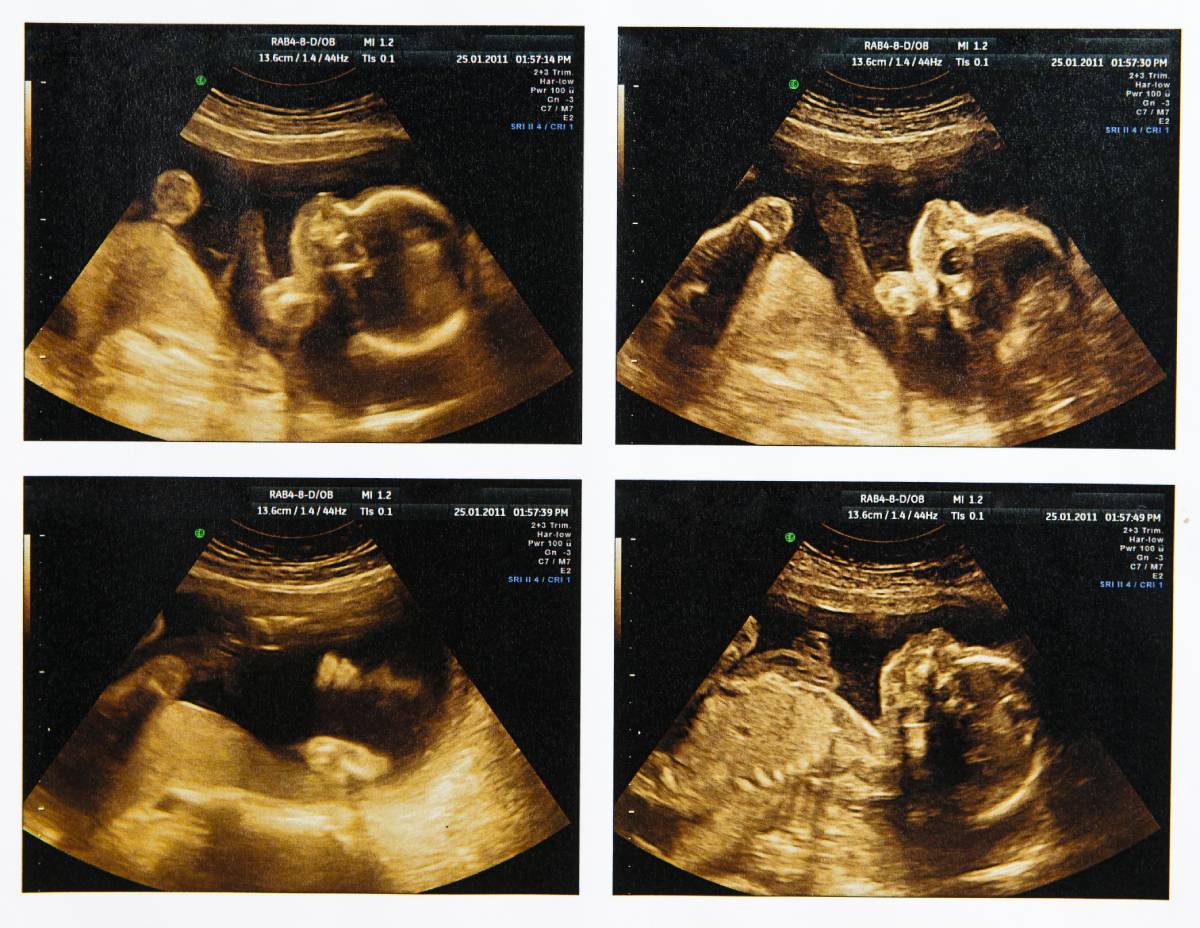Around three to four percent of fetuses are in breech presentation at term [1]. Breech presentations significantly increase the risk of complications during delivery, including birth asphyxiation/trauma, premature labor, and incidence of congenital malformations [2]. The majority of breech babies are delivered surgically; however, undergoing a cesarean section can increase risk of complications in future pregnancies [3]. Therefore, a vaginal birth is preferable in cases where surgical intervention is avoidable. External cephalic version is an intervention to a breech birth which involves manually rotating the baby in utero using both hands and ultrasound to enable vaginal delivery, often with the support of anesthesia.
External cephalic version is usually performed before labor begins, typically at about 37 weeks of gestation. Numerous factors may influence the success of an external cephalic version: for example, outcomes are improved for multiparous women, complete breech presentations, posterior placenta placement, and smaller fetuses [4]. Regardless, given the overall efficacy and relative safety of external cephalic version, international guidelines recommend that all women with low-risk breech pregnancies should be offered the procedure before considering a cesarean section [5].
Despite the benefits of undergoing external cephalic version and having a vaginal delivery, many women are concerned about pain management during the procedure. In addition, it has been shown that pain reactions can compromise the efficacy of the procedure by increasing abdominal guarding and muscle tone, thus inhibiting positional manipulation [6]. For these reasons, finding the optimal anesthesia regimen is a critical part of both pain management and procedural efficacy.
Limited research has examined the effectiveness of alternative pain management techniques during external cephalic version. There has been weak evidence to suggest that acupuncture, for example, can slightly improve procedural outcomes [7]. Other studies have shown that hypnosis can both provide analgesic effects and decrease abdominal muscle tone, thus improving the success rate of external cephalic version [8]. However, these types of studies tend to be smaller in size and many have not been replicated.
On the other hand, there is substantial evidence that some forms of anesthesia may be more efficacious for external cephalic version than others. For example, it was found that opiates successfully reduced maternal pain but failed to improve procedural outcomes as compared to patients who did not undergo pain treatment [9]. Conversely, non-randomized studies showed that high doses of neuraxial analgesia significantly improved procedural outcomes and reduced abdominal guarding as compared to other anesthetic methods [4]. These findings were consistent for both epidurals and spinal techniques.
Depending on the specific background and desires of the patient, the ideal anesthetic regimen for external cephalic version may vary. However, existing studies would suggest that alternative pain management methods may be a viable option, and that neuraxial anesthesia may be preferable over opiates. These findings should therefore be taken into consideration when determining a treatment plan for breech pregnancies.
References
1. Hickok, D. E., Gordon, D. C., Milberg, J. A., Williams, M. A., & Daling, J. R. (1992). The frequency of breech presentation by gestational age at birth: a large population-based study. American Journal of Obstetrics and Gynecology, 166(3), 851–852. https://doi.org/10.1016/0002-9378(92)91347
2. Verspyck, É., Schmitz, T., Rozenberg, P., Senat, M. V., & Sentilhes, L. (2020). Présentation du siège. Recommandations pour la pratique clinique du CNGOF — Introduction [Breech Presentation: CNGOF Guidelines for Clinical Practice – Introduction]. Gynécologie, Obstétrique, Fertilité & Sénologie, 48(1), 59–60. https://doi.org/10.1016/j.gofs.2019.10.021
3. Solheim K. N., Esakoff T. F., Little S. E. (2011). The effect of cesarean delivery rates on the future incidence of placenta previa, placenta accreta, and maternal mortality. Journal of Maternal-Fetal & Neonatal Medicine.
4. Weiniger C. F. (2013). Analgesia/anesthesia for external cephalic version. Current Opinion in Anaesthesiology, 26(3), 278–287. https://doi.org/10.1097/ACO.0b013e328360f64e
5. Rosman, A. N., Guijt, A., Vlemmix, F., Rijnders, M., Mol, B. W., & Kok, M. (2013). Contraindications for external cephalic version in breech position at term: a systematic review. Acta Obstetricia et Gynecologica Scandinavica, 92(2), 137–142. https://doi.org/10.1111/aogs.12011
6. Hannah M. E., Hannah W. J., Hewson S. A. (2000). Planned caesarean section versus planned vaginal birth for breech presentation at term: a randomised multicentre trial. Lancet.
7. Coyle M. E., Smith C. A., Peat B. (2012). Cephalic version by moxibustion for breech presentation. Cochrane Database System Review.
8. Reinhard J., Heinrich T. M., Reitter A. (2012). Clinical hypnosis before external cephalic version. American Journal of Clinical Hypnosis.
9. Cluver C., Hofmeyr G. J., Gyte G. M. L. (2012). Interventions for helping to turn breech babies to head first presentation when using external cephalic version. Cochrane Library.
